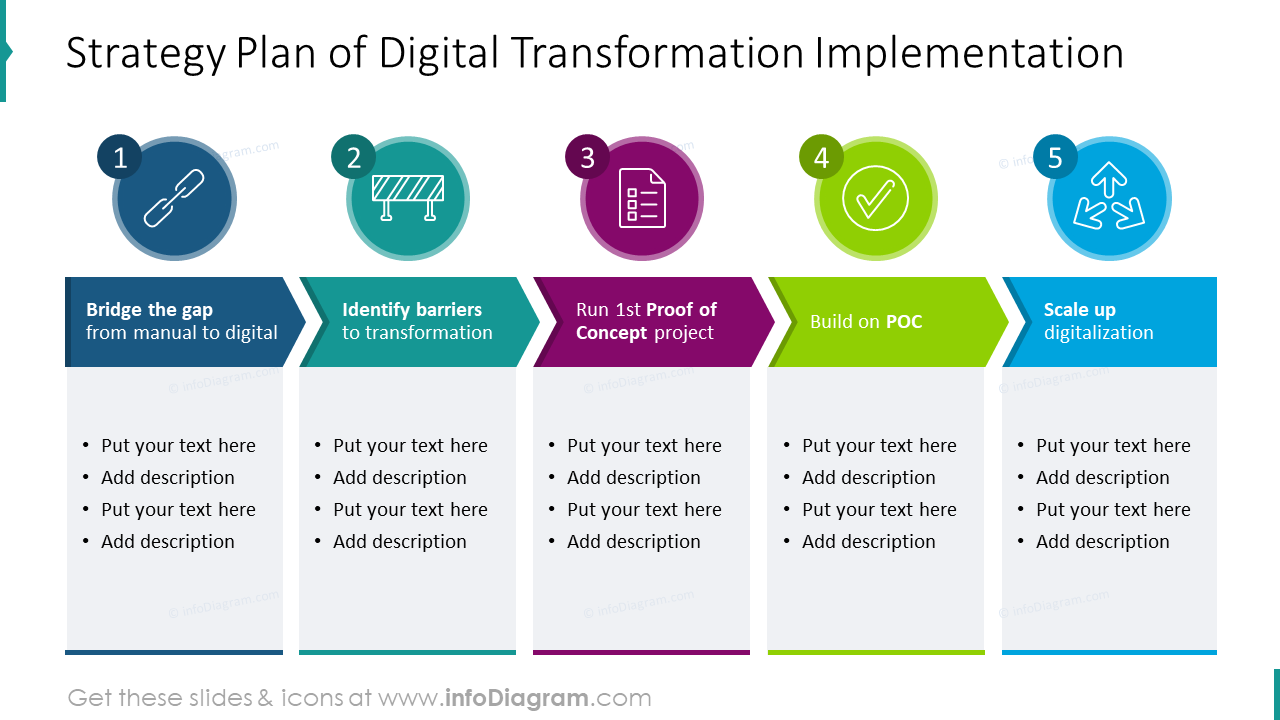Digital Transformation Strategies

What is Digital Transformation?
Digital transformation involves integrating digital technology into all areas of a business. It changes how organizations operate and deliver value to customers. This transformation is more than just adopting new technology; it fundamentally alters business processes and customer interactions. Companies must embrace change to stay competitive in today’s fast-paced digital landscape.
Why Digital Transformation Matters
Digital transformation is crucial for several reasons:
- Enhanced Customer Experience: Today’s consumers expect seamless interactions across multiple channels. Businesses that prioritize digital transformation can meet these expectations and improve customer satisfaction.
- Increased Efficiency: Automation and digital tools streamline operations. This efficiency reduces costs and frees employees to focus on more strategic tasks.
- Data-Driven Decisions: It allows businesses to collect and analyze data. This capability leads to informed decision-making and improved strategies.
- Competitive Advantage: Companies that adapt to digital trends gain a competitive edge. They can respond more quickly to market changes and customer needs.
- Innovation: Embracing digital technology fosters a culture of innovation. Organizations can explore new business models and services, keeping them relevant in a changing marketplace.

Key Strategies for Digital Transformation
Implementing a successful digital transformation requires strategic planning. Here are key strategies organizations can adopt:
- Define Clear Goals: Before embarking on digital transformation, businesses must define clear objectives. What do you hope to achieve? Whether it’s improving customer engagement or streamlining operations, having specific goals guides the transformation process.
- Invest in the Right Technology: Choosing the right technology is critical. This can include cloud computing, data analytics, and artificial intelligence. Evaluate existing systems and identify gaps that new technologies can fill.
- Foster a Digital Culture: Cultivating a digital culture within the organization is essential. Employees should be encouraged to embrace new technologies and innovative practices. Provide training and support to help them adapt.
- Focus on Customer-Centric Solutions: It should prioritize customer needs. Gather feedback and use it to refine products and services. This approach ensures that digital initiatives align with customer expectations.
- Implement Agile Methodologies: Adopting agile methodologies can enhance flexibility. Agile practices promote collaboration and adaptability, allowing teams to respond quickly to changes. This is particularly important in fast-paced digital environments.
- Leverage Data Analytics: Data is a powerful asset in digital transformation. Organizations should invest in analytics tools to gather insights about customer behavior and market trends. This data-driven approach informs better decision-making.
- Integrate Systems: Ensure that different systems and platforms work together seamlessly. Integration allows for better data flow and collaboration across departments. This cohesion is vital for a successful digital strategy.
- Measure Success: Establish key performance indicators (KPIs) to measure the success of digital initiatives. Regularly assess progress against these metrics to determine what’s working and what needs adjustment.
Challenges of Digital Transformation
While it offers numerous benefits, organizations may face challenges:
- Resistance to Change: Employees may resist new technologies or processes. Change management strategies can help ease this transition and promote acceptance.
- High Costs: Implementing digital transformation can require significant investment. Organizations must carefully budget and plan to ensure a good return on investment.
- Data Security Concerns: As businesses collect more data, the risk of cyberattacks increases. Prioritize cybersecurity measures to protect sensitive information.
- Skill Gaps: Not all employees may possess the necessary digital skills. Organizations should invest in training and development programs to bridge these gaps.
- Overwhelming Choices: The rapid pace of technological advancement can be overwhelming. Businesses must carefully evaluate their options and choose technologies that align with their goals.

The Role of Leadership
Leadership plays a critical role in successful digital transformation. Leaders must champion the transformation effort and promote a clear vision. They should also encourage collaboration across departments. By fostering an environment that embraces change, leaders can inspire employees to engage with new technologies and processes.
Real-World Examples of Digital Transformation
Many organizations have successfully implemented digital transformation strategies. Here are a few examples:
- Amazon: Amazon has revolutionized retail through digital transformation. By leveraging data analytics and cloud computing, they offer personalized shopping experiences and efficient logistics.
- Netflix: Netflix transformed how we consume entertainment. They embraced digital streaming and utilized data to recommend content, enhancing customer satisfaction.
- Zara: Zara uses technology to streamline its supply chain. Real-time data collection allows them to respond quickly to fashion trends, ensuring they meet customer demands.
- Domino’s Pizza: Domino’s has embraced digital ordering systems, allowing customers to order via apps and websites. This convenience has improved customer engagement and sales.
- General Electric (GE): GE has integrated IoT technology into its operations. This digital transformation has led to improved efficiency and predictive maintenance across its manufacturing processes.
Conclusion
Digital transformation is essential for organizations looking to thrive in a digital-first world. By defining clear goals, investing in technology, and fostering a culture of innovation, businesses can navigate the challenges of transformation. Leadership commitment and customer-centric solutions further enhance the success of these strategies. As technology continues to evolve, embracing digital transformation will enable organizations to stay competitive and relevant in their industries.




